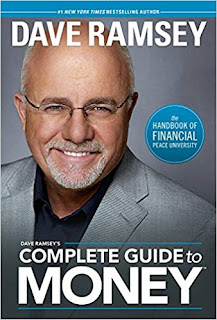Money on the Twos is a regular feature on Dystopian Survival. Every 2nd, 12th, and 22nd of the month will feature a new article on Financial Preparedness, one of the most import aspects of modern dystopian survival.
As we all learned this year, you never know when disaster will strike or what form it will take. And it is not just global pandemics and politically-motivated economic shutdowns that we have to worry about. At some point in our lives, most of us will face a sudden emergency of some sort, be it a job loss, an unexpected illness or death in the family, a house fire, long-term disability or catastrophic damage from a hurricane or tornado. If the worst did happen, could you manage? Being prepared financially for an unexpected emergency is one of the best ways to make sure that, when disaster happens, you’ll land on your feet again.
Here are some important steps in getting your finances ready for disaster:
1- Have an Emergency Fund. Money experts say that you should have an emergency fund of at least three to six months of living expenses. That is okay for a start, but I say more is even better. For most families, I would set the goal at one to two years of living expenses. That is a lot, I know. But it can be done, with time, effort, determination, discipline, and a willingness to sacrifice now so you and your family will be safe later. As Dave Ramsey says, “If you will live like no one else, later you can live like no one else.”
Living expenses are your mortgage or rent; power, phone, and other utility bills; regular payments such as credit card bills and car payments; and food, gas, and other necessities. Not included are luxury items like entertainment, eating out, and vacations. Once you figure out what your living expenses for a month are, then it will be easy to determine your goals.
Let's say you figure out that you living expenses are $1,500 a month. Your three-month emergency fund goal would be $4,500. A six-month goal is $9,000. A one-year goal is $18,000. A two-year goal is $36,000.
Those are some daunting numbers, but don't let numbers intimidate you from achieving this goal. Start with a smaller goal, such as saving an initial $1,000. Then move on to the three-month goal, of which you now have $1,000 and therefore only need another $3,500. Then move on to the six-month, one-year, and two-year goals. No one expects you to quickly achieve the two-year goal. Do it as you would eat an elephant, one bite at a time. It is going to take time and effort, but the best things in life are worth it.
By the way, if you become debt-free, you lower your living expenses, making your goals smaller and easier to achieve. Let's say that $300 of that $1,500 living expenses example is a car payment. By getting out of that payment, perhaps trading down, your living expenses drop to $1,200 a month. This makes your 3 month goal $3,600 instead of $4,500. Your six-month goal becomes $7,200 instead of $9,000. Your one-year goal $14,400 and your two-year goal $28,800, which is $7,200 less than it would be with the car payment. Do you see now how much easier your life will be if you get debt-free? Or maybe you are too worried about what your neighbors will think if you aren't driving a brand new car?
Your emergency fund should be kept in a a separate account (savings or money market) from your other financial accounts and ONLY used for emergencies. You may need to wait until you can meet the minimum balance requirement to avoid fees, but move the money into a separate account as soon as possible. You should also keep a small amount in cash (a few hundred dollars) at home in a safe, hidden place that only you and your spouse know about, in case the ATM system goes down due to a power outage.
Again, I understand these are big numbers and an intimidating task, especially for folks struggling to get by paycheck to paycheck. Rarely is anyone's situation truly hopeless, just really difficult. But you need to do this to survive and prosper in our emerging dystopian future. It is up to YOU to figure out how to do this. That is part of taking responsibility for your own life, also known as self-reliance. To help you out, I have a lot of financial articles on this website, many with very specific suggestions. Here are just a few of those articles:
Financial Preparedness: Back to the Basics
Money Mistakes of the Poor & Middle Class (plus solutions)
The NEW Financial Tips for Preppers and Survivalists
Make financial preparedness a MAJOR priority in your life!
Part 2 of this article will be posted on November 2.
-------------------
If you’re looking for practical information to answer all your “How?” “What?” and “Why?” questions about money, this book is for you. Dave Ramsey’s Complete Guide to Money covers the A to Z of Dave’s money teaching, including how to budget, save, dump debt, and invest. You’ll also learn all about insurance, mortgage options, marketing, bargain hunting and the most important element of all―giving.
--------------------
*** Liked this article? Never miss out on future articles by following Dystopian Survival.

No comments:
Post a Comment
Comments are posted without moderation. Use caution when following links, and beware of SPAM and fake links. Please keep discussions civil and on-topic. NOTE: Certain ad-blockers and other security software installed on your browser may block the ability to leave comments on this website. This issue is with that software, not this website.